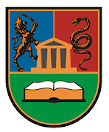Молимо вас користите овај идентификатор за цитирање или овај линк до ове ставке:
https://scidar.kg.ac.rs/handle/123456789/21069Пун извештај метаподатака
| Поље DC-а | Вредност | Језик |
|---|---|---|
| dc.contributor.author | Marinković, Aleksandar | - |
| dc.contributor.author | Stojanovic, Blaza | - |
| dc.contributor.author | Gachot, Carsten | - |
| dc.contributor.author | Lazović, Tatjana | - |
| dc.date.accessioned | 2024-08-15T08:31:42Z | - |
| dc.date.available | 2024-08-15T08:31:42Z | - |
| dc.date.issued | 2024 | - |
| dc.identifier.issn | 2075-4442 | en_US |
| dc.identifier.uri | https://scidar.kg.ac.rs/handle/123456789/21069 | - |
| dc.description.abstract | The purpose of this paper is to analyze the lubrication quality of porous sliding bearings, starting from the bearing model and in combination with experimental results aimed at analyzing the lubrication regimes of different working conditions. The separation between the surfaces by the lubricant layer is what determines the regime. The quality and type of lubrication regime are determined by parameters in the mathematical model including typically speed, load, motion, materials, environment, etc., which have an impact on friction. Besides those elements, important parameters such as coefficient of friction (COF) and working temperature are to be measured due to experimental investigations to detect an equilibrium working state. The self-lubrication mechanism in porous metal bearings improves their service life and lubrication processes; however, the COF still varies within a wide interval. This variability can be understood, considering that during bearing operation it operates within a broad range of lubrication regimes. Those findings are explained in the paper by using a combination of calculated parameters according to the bearing model and in combination with our own results of experimental investigations. With the obtained results for particular working conditions, the authors are trying to explain, in the form of a diagram with the limit line as an important outcome of the work, that the lubrication regime for porous metal bearings could arise from boundary lubrication (BL) close to hydrodynamic lubrication (HDL). | en_US |
| dc.language.iso | en | en_US |
| dc.publisher | MDPI | en_US |
| dc.relation.ispartof | Lubricants | en_US |
| dc.subject | lubrication regime | en_US |
| dc.subject | self-lubricating sliding bearing | en_US |
| dc.subject | oil film thickness | en_US |
| dc.subject | experimental investigation | en_US |
| dc.title | Analysis of Lubrication Regimes for Porous Sliding Bearing | en_US |
| dc.type | article | en_US |
| dc.description.version | Published | en_US |
| dc.identifier.doi | 10.3390/lubricants12060184 | en_US |
| dc.identifier.scopus | 2-s2.0-85197883342 | en_US |
| dc.type.version | PublishedVersion | en_US |
| Налази се у колекцијама: | Faculty of Engineering, Kragujevac | |
Датотеке у овој ставци:
| Датотека | Опис | Величина | Формат | |
|---|---|---|---|---|
| lubricants-12-00184-v2.pdf | 3.55 MB | Adobe PDF |  Погледајте |
Ставке на SCIDAR-у су заштићене ауторским правима, са свим правима задржаним, осим ако није другачије назначено.

